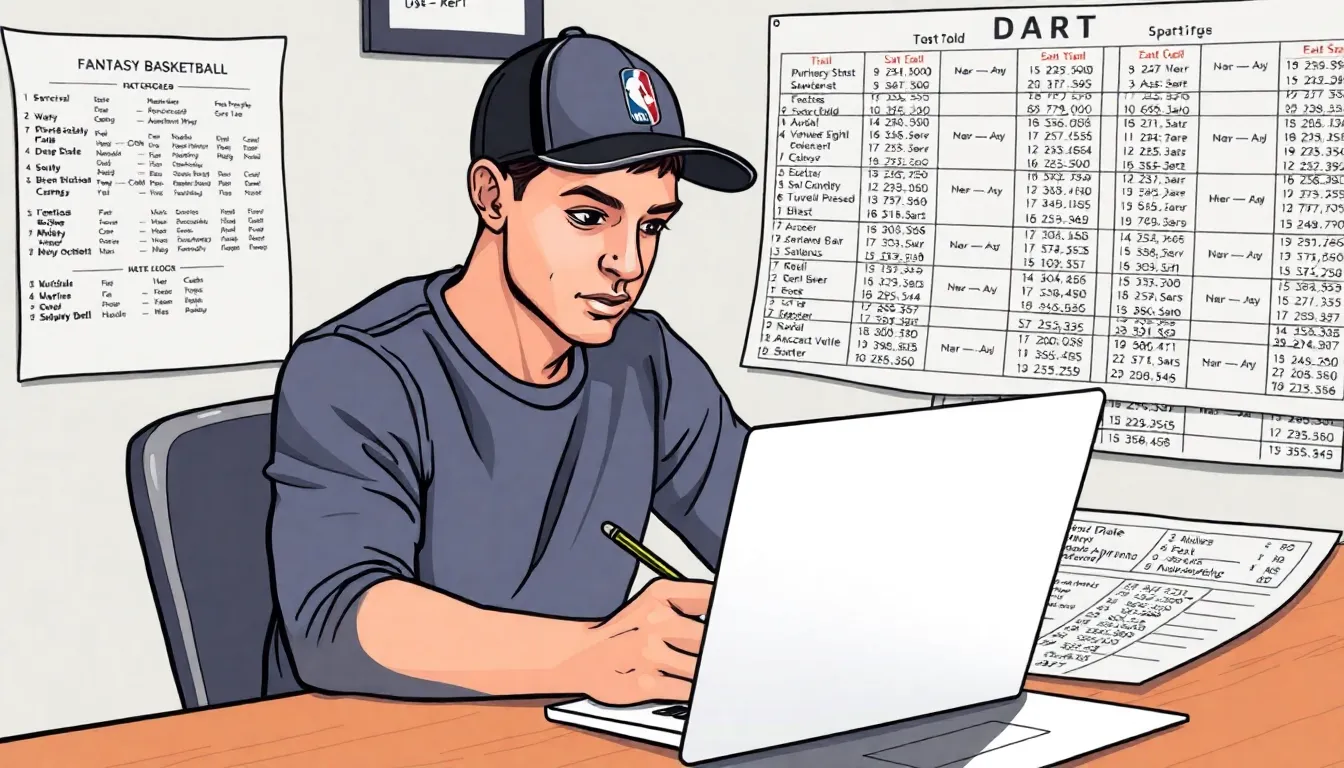
Fantasy Basketball Strategy: Unlock Winning Tips for Your Championship Team
Fantasy basketball isn’t just a game; it’s a thrilling rollercoaster ride through stats, trades, and the occasional late-night panic over a player’s injury report. Whether he’s a seasoned pro or a rookie in the league, every manager dreams of crafting a championship-winning roster. But let’s face it, navigating the world of fantasy basketball can feel like trying to dribble a basketball with your feet—awkward and messy.
Fantasy Basketball Strategy
Fantasy basketball combines statistical analysis with strategic decision-making. Effective management requires understanding players’ performances, trends, and league rules.
What Is Fantasy Basketball?
Fantasy basketball involves participants assembling virtual teams composed of real NBA players. Points accumulate based on statistical performance in actual games, such as points, rebounds, and assists. Players compete based on their teams’ success over a season. Active participation includes drafting players, managing rosters, and making trades. Regular updates and monitoring of player performance contribute to engaging gameplay.
Importance of Strategy in Fantasy Basketball
Strategy plays a crucial role in achieving success in fantasy basketball. Managers must evaluate player stats and trends before drafting. Prioritizing specific categories, such as rebounds or assists, can shape a team’s strengths. Analyzing opponent rosters and predicting performance fluctuations aids in making informed decisions. Utilizing waiver wire options and keeping up with player injuries further enhances a team’s competitiveness. Timely trades can also boost a roster’s overall performance.
Preparing for Your Draft

Preparing for your fantasy basketball draft requires focused research and strategic planning. Managers must gather information, analyze statistics, and prioritize player selections.
Researching Players and Stats
Analyzing player statistics proves essential for building a competitive team. Start by reviewing past performance metrics like points per game, rebounds, and assists. Prioritize players who excel in categories relevant to your league’s scoring system. Utilize resources like ESPN and Yahoo for up-to-date stats and projections. Explore trends from the previous season, as they provide insights into player potential. Monitor injuries or trades which can impact player value. Understanding these statistics helps in making informed decisions that align with personal goals.
Creating a Draft Board
Creating a draft board streamlines the drafting process. Categorize players based on positions and projected statistics. Having a visual list allows managers to quickly identify top targets. Consider including a tiered ranking system to simplify selection during the draft. Populate the board with backup options to prepare for potential last-minute changes. Revisit this board regularly leading up to the draft, as player values may shift due to injuries or trades. This structured approach enhances focus on important choices when it is time to draft.
In-Season Management
In-season management significantly influences a fantasy basketball team’s success. Managers must adapt to player performance trends, injuries, and other factors while optimizing their lineups.
Monitoring Player Performance
Monitoring player performance requires a consistent review of statistics. Regularly checking box scores and advanced metrics helps managers evaluate how each player contributes to their team’s scoring. Observing streaks of good or bad performances can signal when to start or bench a player. Pinnacle moments arise when managers spot potential breakout players emerging from the bench. Moreover, utilizing league-specific online tools offers insights into players’ overall value. Keeping an eye on matchups allows managers to capitalize on favorable situations against weaker defenses. This diligent tracking provides a competitive edge necessary for success.
Making Strategic Trades
Making strategic trades enhances team depth and addresses weaknesses. Initial assessments of team composition guide trading decisions. Evaluating trade offers includes analyzing both short-term benefits and long-term potential gains. Engaging in discussions with other managers fosters relationships that can lead to advantageous swaps. Additionally, identifying buyers’ remorse can help leverage more favorable terms. Targeting underperforming stars can reap high rewards when they bounce back. Timing trades around injury reports or player slumps can significantly sway negotiations in favor of the proactive manager. A well-timed trade often proves essential for maintaining strong roster dynamics.
Playing the Waiver Wire
Utilizing the waiver wire effectively can enhance a fantasy basketball team’s performance. Managers must consistently scout for players who can provide significant contributions.
Identifying Waiver Wire Gems
Focus on emerging players. Analyze recent performances and identify trends signaling potential breakout candidates. Research advanced statistics like usage rate and minutes played to evaluate their role on their respective teams. Look for players who are stepping up due to injuries or trades, as these situations often create opportunities. Keep an eye on rookies showing promise or veterans experiencing a resurgence. Staying informed through social media, fantasy analysis articles, and expert rankings can pinpoint hidden gems available on the waiver wire.
Timing Your Waiver Claims
Timing plays a crucial role in maximizing waiver wire benefits. Flexibility with claim submissions allows managers to capitalize on trends before competitors. Monitor weekly schedules to anticipate favorable matchups, particularly during busy weeks. Submitting claims immediately after strong games or injuries increases chances of acquiring valuable players. Avoid waiting until the last minute to make a claim; early action is often more beneficial. Regularly assess the waiver wire throughout the season to ensure optimal roster strength and competitiveness.
Conclusion
Mastering fantasy basketball requires a blend of research strategy and adaptability. Managers who stay informed about player performance and trends can make smarter decisions that enhance their team’s competitiveness. The ability to navigate trades and utilize the waiver wire effectively can turn a good team into a championship contender.
As the season progresses it’s crucial to remain proactive. Regularly reviewing stats and being aware of league dynamics will empower managers to seize opportunities. With dedication and a keen eye for emerging talent, anyone can elevate their fantasy basketball experience and aim for the ultimate prize.



